Hobbycraft 1/48 Mohawk IV
|
KIT #: |
HC 1556 |
|
PRICE: |
@$20.00 when new |
|
DECALS: |
Three options |
|
REVIEWER: |
Jonathan Prestidge |
|
NOTES: |
|
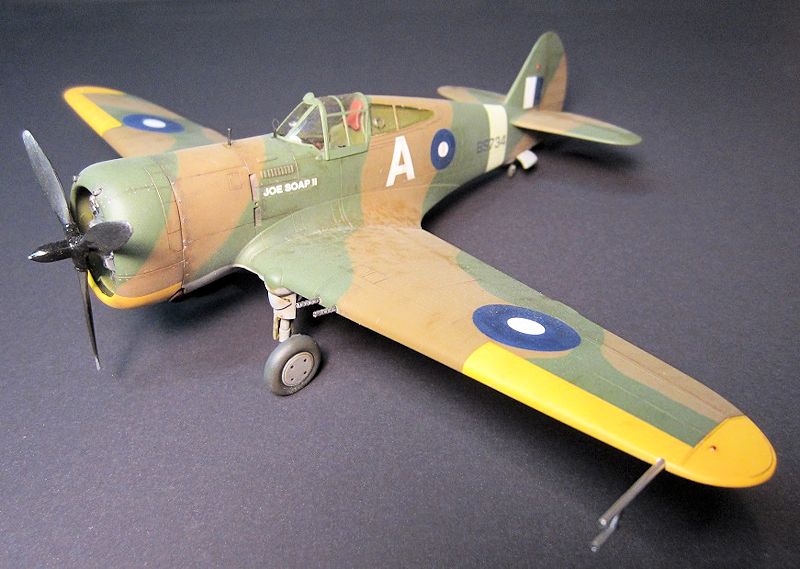
The
Curtis Hawk 75 A-4 was a development of the Curtis P-36 (the father of the
P-40). The Hawk 75 line was developed specifically for export to other nations.
They served with both Allied and Axis nations in every theater of WWII. Like the
P-40, the Hawk 75 was a mediocre performer that was fortunately available in
large enough numbers to hold down the fort until better equipment was available.
Though 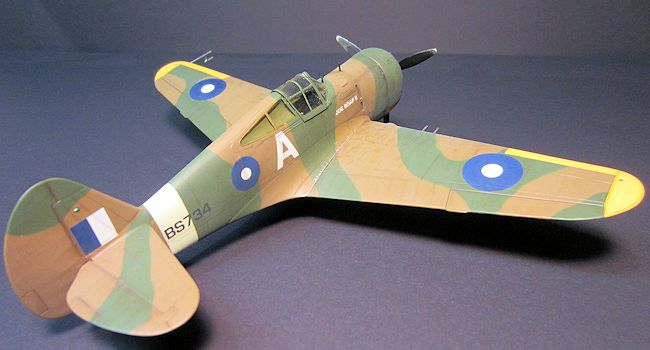 slow and underpowered even by early war standards, its strengths of
rugged construction, well balanced maneuverability, excellent dive speed, and
adequate firepower earned it the loyalty of those who flew it.
slow and underpowered even by early war standards, its strengths of
rugged construction, well balanced maneuverability, excellent dive speed, and
adequate firepower earned it the loyalty of those who flew it.
The
Hawk 75 A-4 was developed for the French government and featured a nine-cylinder
Wright GR-1820-87 Cyclone 9 in place of the 14-cylinder Twin Wasp of the P-36.
This resulted in the blunt nosed look of the A-4. Though its 1200 hp output made
the A-4 the fastest of the Hawks, the Wright 1820 was prone to oil starvation
and seizing during hard maneuvers. The RAF Mohawk IVs were the balance of the
French order for 275 aircraft that had only started to be delivered when France
fell to the Germans. Over 200 arrived in Britain during 1940. The British
Mohawks were fitted with six Browning 7.7mm (.303-in) machine guns and various
other British equipment. They were also repainted in the standard RAF scheme of
Earth Brown and Dark Green over Light Gray.
The
Mohawk IV saw action in South Africa, India and Burma. In the C.B.I. theatre
they were used for bomber escort, standing patrols, and close-support duties.
The first Mohawk “kill” was recorded on 20 August, 1942.
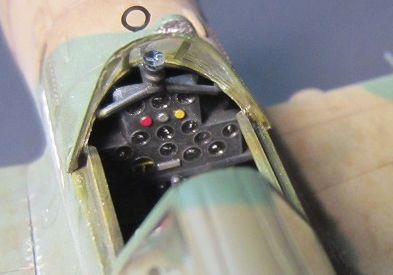 There
was no copyright on this example but the kit has been around from the early
1990s if not before. Hobbycraft’s P-36 series is notable for its shiny plastic,
engraved detail, low parts count, and fit that is iffy in spots (the engine
cowling area being horrid). It is molded in hard white plastic and has minimal
flash on most of the parts. The detail is sparse (a one piece engine!), but it
is the only game in town for a 1/48th Mohawk IV. The only aftermarket
items used were Eduard pre-painted seatbelts for the pilot. The kit decals are
thin, opaque and in register. I used a fair amount of “modeling skill” to turn
this kit out.
There
was no copyright on this example but the kit has been around from the early
1990s if not before. Hobbycraft’s P-36 series is notable for its shiny plastic,
engraved detail, low parts count, and fit that is iffy in spots (the engine
cowling area being horrid). It is molded in hard white plastic and has minimal
flash on most of the parts. The detail is sparse (a one piece engine!), but it
is the only game in town for a 1/48th Mohawk IV. The only aftermarket
items used were Eduard pre-painted seatbelts for the pilot. The kit decals are
thin, opaque and in register. I used a fair amount of “modeling skill” to turn
this kit out.
Construction
begins with painting and detailing the cockpit. As mentioned earlier, there is
minimal flash, but it cleans up easily with a swipe of the X-Acto. Poly Scale
French Khaki was painted throughout, followed by detail painting, a wash, and
drybrushing to bring out the detail. I added the Eduard seatbelt for the pilot’s
seat at this time. I then closed up the fuselage.
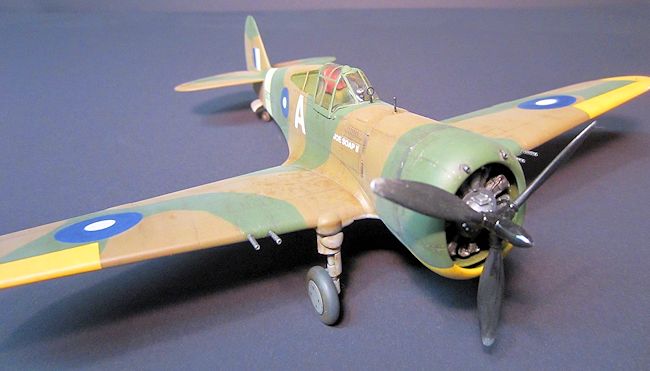 Next,
I glued the upper wings to the fuselage. I then added the lower wing. I attached
the engine spacer and cowlings to the fuselage. Not only was the fit terrible,
but there was also a seam that ran around the entire nose section that is not on
the real aircraft. I’m sure this is just a result of Hobbycraft trying to get as
many Hawk variants as they could from the existing molds. Multiple puttying and
sanding sessions later, the seam was mostly gone.
Next,
I glued the upper wings to the fuselage. I then added the lower wing. I attached
the engine spacer and cowlings to the fuselage. Not only was the fit terrible,
but there was also a seam that ran around the entire nose section that is not on
the real aircraft. I’m sure this is just a result of Hobbycraft trying to get as
many Hawk variants as they could from the existing molds. Multiple puttying and
sanding sessions later, the seam was mostly gone.
There is a
noticeable accuracy issue with this kit. The front cowling is about six scale
inches too short in cord (from front to back). The overall length is close, so
I’m not sure what happened. Also, there should be a noticeable relief just
behind the cowl flaps. I had to cut this relief myself and rescribe detail there
and on the engine spacer. An application of putty & Mr. Surfacer was followed by
sanding in preparation for paint.
As
the final step before painting, I added the canopy. There are options to pose
the canopy open or closed. I built mine so that I can open it if I choose. The
clear parts were dipped in future prior to assembly. I added a rear view mirror
made from sprue on top of the windscreen. I used Tamiya tape to mask the clear
parts.
I wanted to
model a C.B.I. Mohawk IV (Joe Soap II) circa 1943. I have several great photos
of RAF Mohawks for reference. As mentioned above, the standard RAF scheme of
Earth Brown and Dark Green over Light Gray was used with a Sky theatre band and
yellow wing tips and leading edges. Since these pl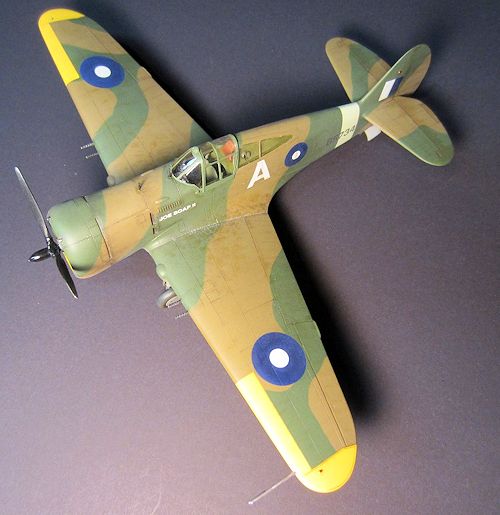 anes were painted in Britain,
I used Poly Scale acrylic RAF colors and the standard RAF fighter camo pattern.
French Khaki was sprayed on the canopy framing and gear wells first. Then the
airframe colors were then added in several painting and masking sessions.
anes were painted in Britain,
I used Poly Scale acrylic RAF colors and the standard RAF fighter camo pattern.
French Khaki was sprayed on the canopy framing and gear wells first. Then the
airframe colors were then added in several painting and masking sessions.
At
this point I used pastels to emphasize the panel lines, add exhaust stains and
dirty the airframe up a bit. I added structural detail using the pastels to
highlight the underlying stringers, etc. I tried to keep things subtle, adding
just enough to enhance the detail. I used a reference book to locate the
stringers, bulkheads, etc. I then sealed everything with a coat of future in
preparation for decals.
I
used the kit decals for this one with no problems. I had to darken the national
insignia with several washes to tone down the purple of the kit decals. Micro
Sol settled things down. After weathering the decals, I gave the plane a final
flat clear coat. The landing gear, engine, and other final bits were added at
this time. Final detailing was then completed.
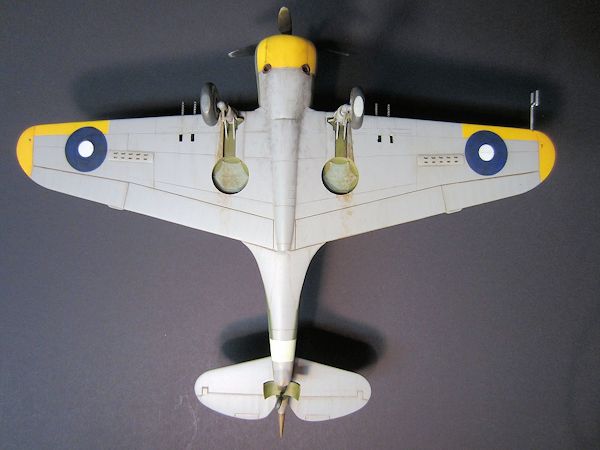 As simple
as this kit was, the nose area was a real challenge. Since it is the only
model of this particular aircraft in 1/48th one’s only choice is to
build it or not. Like the real aircraft, this kit is not ideal, but it’ll have
to do until a better alternative is available. I’m happy enough with the end
result to put it in the display but would only recommend it to those who must
have this important Hawk variant in their lineup. It looks like a Mohawk IV –
just don’t look too close!
As simple
as this kit was, the nose area was a real challenge. Since it is the only
model of this particular aircraft in 1/48th one’s only choice is to
build it or not. Like the real aircraft, this kit is not ideal, but it’ll have
to do until a better alternative is available. I’m happy enough with the end
result to put it in the display but would only recommend it to those who must
have this important Hawk variant in their lineup. It looks like a Mohawk IV –
just don’t look too close!
Jonathan
Prestidge
December 2013
If you would like your product reviewed fairly and fairly quickly, please
contact
the editor
or see other details in the
Note to
Contributors.
Back to the Main Page
Back to the Review
Index Page


 slow and underpowered even by early war standards, its strengths of
rugged construction, well balanced maneuverability, excellent dive speed, and
adequate firepower earned it the loyalty of those who flew it.
slow and underpowered even by early war standards, its strengths of
rugged construction, well balanced maneuverability, excellent dive speed, and
adequate firepower earned it the loyalty of those who flew it. 

 anes were painted in Britain,
I used Poly Scale acrylic RAF colors and the standard RAF fighter camo pattern.
French Khaki was sprayed on the canopy framing and gear wells first. Then the
airframe colors were then added in several painting and masking sessions.
anes were painted in Britain,
I used Poly Scale acrylic RAF colors and the standard RAF fighter camo pattern.
French Khaki was sprayed on the canopy framing and gear wells first. Then the
airframe colors were then added in several painting and masking sessions.
 As simple
as this kit was, the nose area was a real challenge. Since it is the only
model of this particular aircraft in 1/48th one’s only choice is to
build it or not. Like the real aircraft, this kit is not ideal, but it’ll have
to do until a better alternative is available. I’m happy enough with the end
result to put it in the display but would only recommend it to those who must
have this important Hawk variant in their lineup. It looks like a Mohawk IV –
just don’t look too close!
As simple
as this kit was, the nose area was a real challenge. Since it is the only
model of this particular aircraft in 1/48th one’s only choice is to
build it or not. Like the real aircraft, this kit is not ideal, but it’ll have
to do until a better alternative is available. I’m happy enough with the end
result to put it in the display but would only recommend it to those who must
have this important Hawk variant in their lineup. It looks like a Mohawk IV –
just don’t look too close!